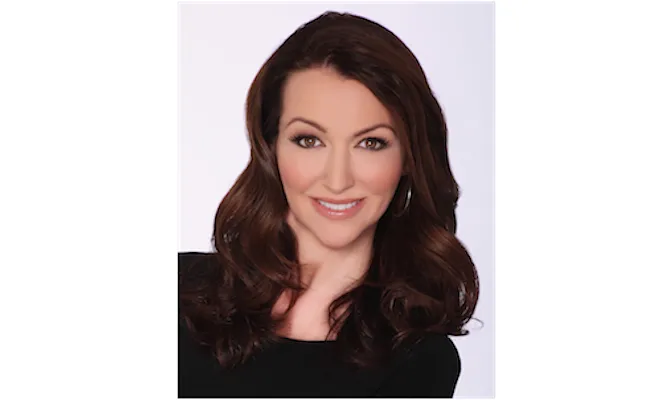DEERFIELD, Ill. — Selling into a retail chain as large as Walgreens can be a formidable challenge for even the largest supplier, let alone a fledgling player. To help smooth the path, Shannon Curtin, Walgreens’ group vice president and general merchandise manager for beauty and personal care, recently offered a primer on how to partner with the growing retailer.
Delivered during a first-of-its-kind webinar sponsored by ECRM, her message was clarion clear — Walgreens intends to amp up its beauty care business with innovative products, especially concepts filling white space, while lessening reliance on promotional pricing as the primary customer draw. She encouraged manufacturers to be totally transparent in their dealings with the retailer as a means to build mutually profitable businesses.
Walgreens’ Shannon Curtin
In introducing Curtin, ECRM vice president Joe Tarnowski pointed to the potential resulting from the recent merger of Walgreen Co. and Alliance Boots GmbH, creating a company with some 13,000 stores in 11 countries, in addition to an international drug distribution network and such global health and beauty product lines as No7, Botanics, and Soap and Glory.
“The company’s three-year plan through fiscal 2017 reflects significant value planning opportunities and, as part of this plan, Walgreens aims to provide a differentiated experience that transforms the retail model for health and wellness and changes how women shop for beauty,” Tarnowski said. The goal of the webinar, he added, is to better understand how to work with Walgreens to drive productivity for all parties involved.
“We have 6 million people who shop with us every day in our stores,” said Curtin, noting that many seek Walgreens for immediate needs. One of her top priorities, she added, is to extend the beauty offer to round out shopping baskets.
“Our vision is to become the world’s most shopped and loved beauty destination,” Curtin remarked. “While ‘most shopped’ is share of wallet and has a pure ROI [return on investment] measure, ‘most loved’ is share of heart and harder to quantify. However, Walgreens has mechanisms in place to understand the shopping journey.”
With the consumer in the driver’s seat, Walgreens is adding items to elevate the beauty and personal care experience. Curtin said she believes that will result in ROR, or return on relationships. Every department decision is now based on Walgreens’ extensive customer data fused with the expertise of its buying team.
Walgreens is adapting its beauty offer for different markets, or store clusters. The masstige selection, which includes “our beloved No7,” will expand to more doors, Curtin said. She was quick to add that inclusion of Boots products and exclusive lines is an addition to the retailer’s national brand product offering.
High-volume stores, often in urban areas, are the perfect pairing for Walgreens’ prestige LOOK Boutiques. There are currently 54 of them, and Curtin believes there is the potential for a LOOK product offering in over 100 stores across the chain.
No matter what the mix, Curtin singled out a “precious” asset at Walgreens in the form of 26,000 U.S. beauty advisors (Walgreens Boots Alliance employs 38,000 of them across the globe), who are viewed as trusted advisors. “That’s more than 10% of our total employee base who are dedicated to the beauty business,” Curtin said. “If you are looking to grow, Walgreens is a good place to start. We have the people in place to share your story and the benefits of your products.”
Executives see Walgreens’ in-store beauty advisors as a “precious asset.”
The beauty advisors, who receive custom training via Walgreens’ Beauty University, are instrumental in getting products into consumers’ hands. Another tool for that purpose is a new promotional program vendors can participate in called Beauty Must Haves.
Curtin discussed the transition from Walgreens’ former position as a “high-high, low-low” retailer to a new image where the shopping experience trumps price. Reliance on low prices as the primary appeal to the consumer isn’t as sustainable a strategy as it once was, she suggested. “Now customers can shop anywhere with their smartphones and find prices online. We have to give customers additional reasons to shop with us as we establish value that’s relevant to them.”
Part of Walgreens’ plan is to reward and treat its best customers. Curtin said the company knows who they are and plans to delight them with the beauty products they desire, often in categories they once had to shop at department stores.
One imperative is to have “relevant” innovation, especially from up-and-coming brands, she noted. “People often ask how does a small company get a foot in the door with our category managers,” she said. “If a company has a true breakthrough item, Walgreens wants to know. We know the voids in our offer, and our category managers understand innovation.”
In fact, the drug chain has a rich history of incubating products in such categories as naturals, which Curtin is on the prowl to expand. Naturally inspired products are certainly an area ripe for growth and are currently the fastest-rising personal care category at the chain.
Another priority at Walgreens is skin care, especially since the category merges the front of the house with the pharmacy department, Curtin said. Pharmacists are engaged in recommending skin care products, and they bring added credibility to the category. The same is true for oral care, where Walgreens has its eye on growing this business as it promotes the health aspects of good oral hygiene.
Hair care is another major department where the chain has a goal of improving its standing. “We are focused on being the destination for every hair type,” Curtin said, noting that this represents a significant change from outdated thinking of marketing to ethnic groups.
Walgreens is at the forefront of fresh merchandising strategies driven by America’s “new general market,” shoppers who want to see the walls that used to segregate products come down. “Our approach is to be inclusive of everyone and not exclusive to anyone,” Curtin explained. “We touch 80% of the population, and we have to get our offer as right as we can in every community.”
She also shared Walgreens’ work on trip missions, a deep dive into what prompts people to come into the store and how they shop. The company’s merchants see potential to convert those who only cherry pick Walgreens for sales into loyal beauty consumers. Ditto for those who dash in for an immediate need, often for a remedy, although she noted that there are also lipstick emergencies. She said the right assortment can persuade them to buy beauty on a return trip.
While many women put their family, spouses and even pets ahead of themselves, she envisioned a beauty offer that will inspire more indulgences in cosmetics, skin care, hair care and related segments, in much the same way some women splurge on chocolate as a treat.
Walgreens uses its digital portals to test consumer interest, and this is a “good entry point” for suppliers, Curtin asserted. Also, with real estate limited in stores, the Internet provides infinite opportunities where in-store personnel can order for customers and have an item delivered to a home or a local store. Curtin said those who shop online spend three to five times more at Walgreens, and mobile shoppers spend six times more than those who shop only in stores.
The company strives for a consistent shopping experience, whether a consumer is in her home looking for content or walking into the store in search of a beauty solution.
“There are 200 million smartphones in the marketplace — you have the opportunity to show up 200 million times in peoples’ hands on a regular basis,” noted Curtin.
With the consumer driving Walgreens’ store assortment decisions, Curtin urged suppliers to zero in on the right stores for brands rather than jumping in chainwide. That ensures more rapid turns instead of inventory sitting on the shelf in stores that might not be a good fit for a particular product. “It is really important to identify which clusters are right for your items, as not all stores are right for all items,” she advised.
Curtin completed her remarks by noting that a good supplier partner is focused on what it is good at and possesses a great thought leader. “Those are the qualities that result in the types of interactions that lead to growth for both of us,” she said.









